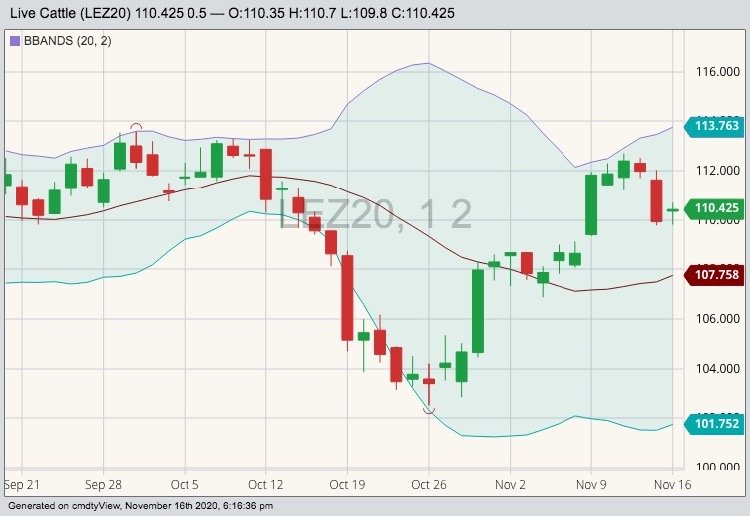Chicago | Reuters — U.S. cattle futures ended mostly higher on Monday on spillover support from soaring equities markets, although gains were limited by worries about rising coronavirus infections and likely restaurant closures.
News of a second promising COVID-19 vaccine lifted both the S+P 500 and the Dow Jones Industrial Average to record highs on Monday, but gains in cattle were more measured following severe meat supply chain disruptions earlier this year.
“The packers, while they’re making excellent money, are very tepid about wanting to step in and buying too much ahead until they get a better idea of when that COVID vaccine is going to arrive,” said Mike Zuzolo, president of Global Commodity Analytics.
Read Also

Alberta crop conditions improve: report
Varied precipitation and warm temperatures were generally beneficial for crop development across Alberta during the week ended July 8, according to the latest provincial crop report released July 11.
“What happened in the spring is still fresh in the minds of the meat packer, the meat buyer and the cattle feedlots,” he said.
Many U.S. cities and states have tightened restrictions on gatherings due to rising coronavirus infection rates. Worries are growing that many restaurants and food service businesses, key outlets for premium beef cuts, may not survive another lockdown.
Chicago Mercantile Exchange December live cattle futures gained 0.5 cent to settle at 110.425 cents/lb. (all figures US$). January feeder cattle rose 0.05 cent, to 137.925 cents/lb.
Lean hog futures closed mostly lower on Monday as traders weighed coronavirus risks, rising feed and labour costs for meat producers and prospects for pork imports by China.
China has made better-than-expected progress on rebuilding its hog herd after African swine fever (ASF) decimated the industry. Tyson Foods CEO Stewart Glendinning, however, said on Monday that ASF in China “is not going away any time soon.”
The meat industry is also facing rising feed and labour costs stemming from the coronavirus pandemic.
December lean hogs ended 0.25 cent higher at 65.15 cents/lb., while actively-traded February contracts fell 0.8 cent to 63.775 cents.
— Karl Plume reports on agriculture and ag commodities for Reuters from Chicago.
















